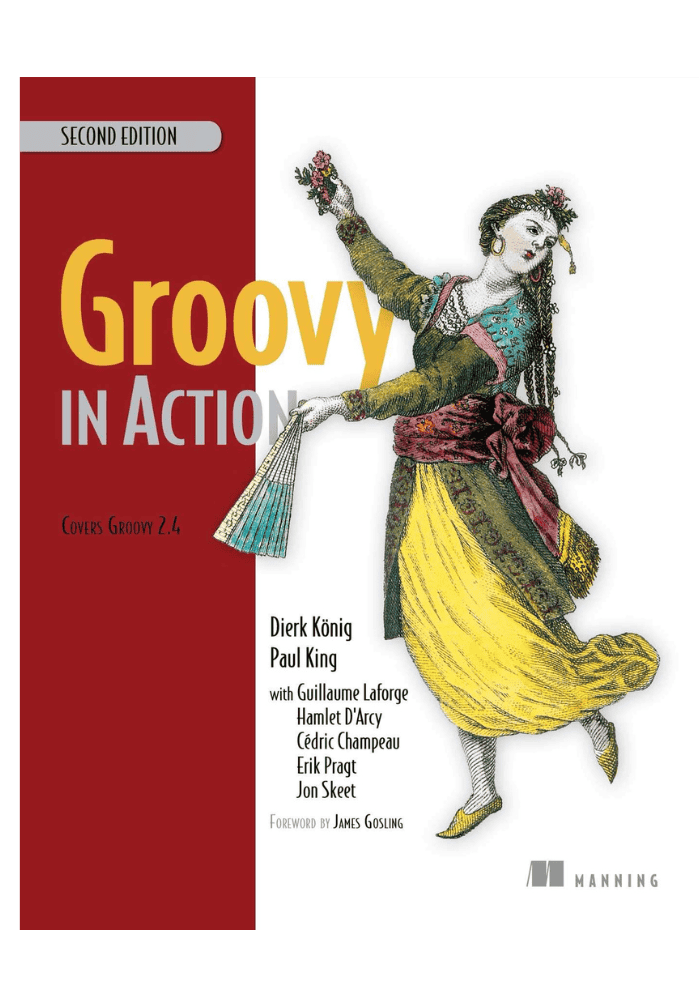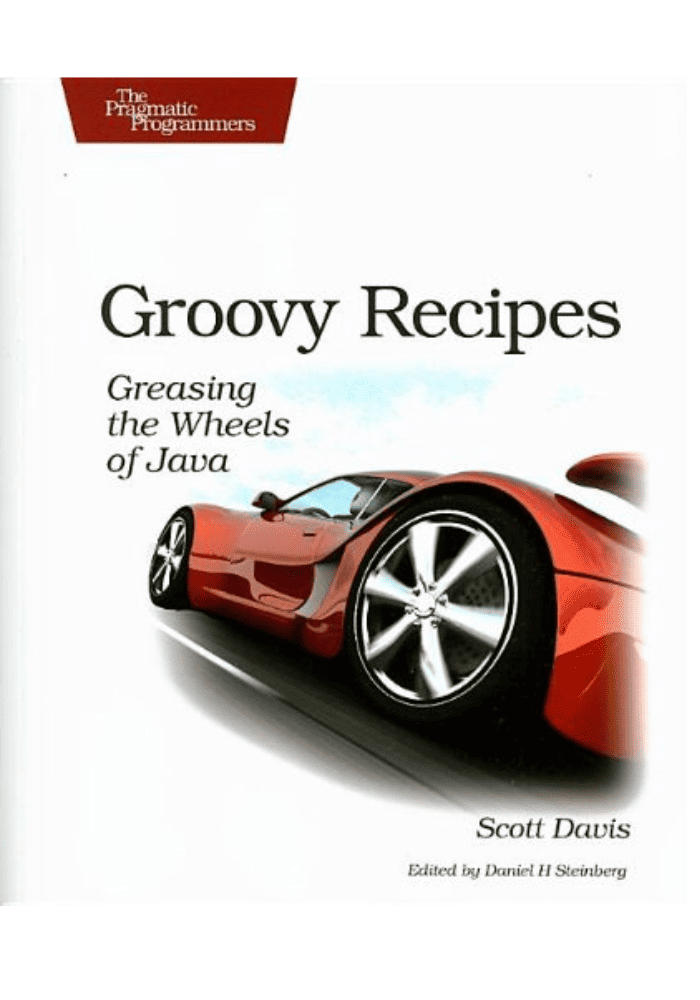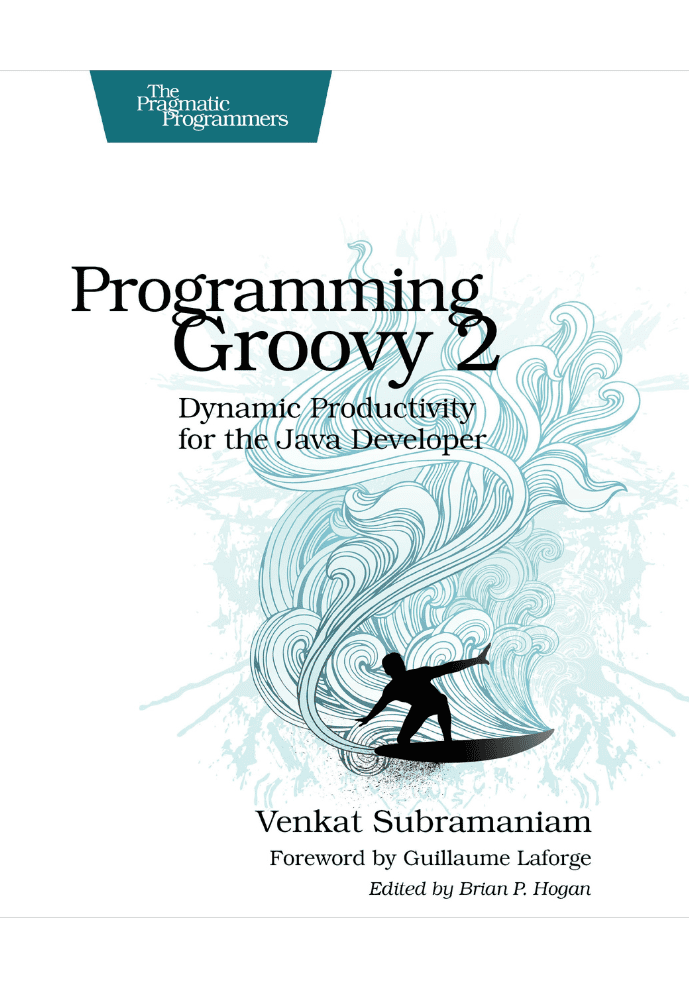I’ve hand-picked the top 5 books that will guide you learn Groovy even if you have never coded in this language. This article will closely examine some of the best Groovy books available today.
So, you might be wondering, what exactly is Groovy? Web development, scripting, and automation are just some of the many uses for this dynamic language that executes on the Java Virtual Machine (JVM). Because of its accessibility, readability, and compatibility with Java, Groovy is a favorite among programmers.
Learning Groovy can benefit you in various ways. Firstly, it can make your Java code more concise and readable, as Groovy has features that allow you to write less code to accomplish the same task. Additionally, Groovy supports functional programming, improving your coding style and making your code more maintainable.
Groovy is also widely used in the automation and scripting world, making it a valuable skill for DevOps engineers and system administrators. With its ease of use and powerful features, learning Groovy can open up many opportunities for aspiring developers and IT professionals.
So, without further ado, let’s dive into the top 5 books for learning Groovy!
#1
by Kenneth Barclay
#5
by Venkat Subramaniam
Groovy Programming: An Introduction for Java Developer
A Practical Guide for Java Developers
Author: Kenneth Barclay
Number of Pages: 496
Time to Read: 33.07 Hours
Published: December 20, 2006
Style of Writing: Hybrid
Ideal for: Beginner to Intermediate
Why do we like this book?
Groovy Programming stands out from other books due to its clear and concise approach to teaching the Groovy scripting language. The book briefly introduces the language before delving into more advanced topics, making it accessible to both beginner and experienced programmers. Its emphasis on Groovy’s potential as a learning tool and its use in integration with Java applications makes it a valuable resource for those seeking to expand their programming skills. With a rating of 4.2 out of 5 stars and glowing reviews from readers, it’s no surprise that Groovy Programming is a top choice for those looking to learn this universal scripting language.

Is it Easy to Read?

Is the Book Comprehensive?

Is the Book Relevant?
What will you learn from this book?
This book comprehensively introduces the Groovy programming language, an increasingly popular scripting language that shares many similarities with other popular languages like Python and Ruby. Additionally, It covers all significant aspects of Groovy development, starting from the basics and progressing to more advanced topics like Groovy SQL. Here is a list of some of the specific topics covered in this book:
- Introduction to Groovy scripting language
- Writing Groovy code using Java-like syntax
- Integration of Groovy with Java applications and APIs
- GUI builders, Grooviest, Unit Testing, and Groovy SQL
- Programming examples, case studies, tutorials, and exercises
- Basic and advanced topics of Groovy programming
- Practical uses of Groovy in real-world applications
- Deep understanding of dynamic and functional programming concepts
Why this book may not be right fit for you?
While “Groovy Programming” may be an excellent fit for many, there are a few reasons why it may not be the right fit for everyone. One common criticism is that the book may not be suitable for experienced Java developers with a solid understanding of Java data types and Object-Oriented Programming concepts. Another issue some readers have experienced is the lack of contrast with corresponding Java features, making it difficult to see the practical applications of Groovy. Additionally, there have been complaints about the unavailability of associated codes, making it difficult to follow the examples in the book. If you are looking for an alternative, you may want to consider “Groovy in Action,” which takes a more practical approach to learn the language.
Groovy in Action: Covers Groovy 2.4
Take Your Java Skills to the Next Level with Groovy
Author: Dierk König
Number of Pages: 912
Time to Read: 60.8 Hours
Published: June 27th 2015
Style of Writing: Hybrid
Ideal for: Intermediate to Advanced level programmers
Why do we like this book?
The book provides a comprehensive and detailed guide to Groovy, covering basic and advanced topics. The book is written by knowledgeable authors who have contributed significantly to developing the Groovy language. The plain English and jargon-free writing style make it easy for beginners to follow along and understand the concepts. The book also includes practical examples and exercises to help readers apply what they have learned. Readers appreciate the book’s content and the fact that it covers deep concepts like metaprogramming. With a 4.7-star rating on Amazon, users have praised the book’s clear explanations, real-world examples, and easy-to-understand code snippets. Overall, “Groovy in Action” is an excellent resource for anyone looking to learn Groovy or improve their existing skills.

Is it Easy to Read?

Is the Book Comprehensive?

Is the Book Relevant?
What will you learn from this book?
Groovy in Action is an informative and comprehensive guide for those who want to learn the Groovy programming language. This book is perfect for beginners and experienced programmers who want to enhance their skills in dynamic programming.
- The fundamentals of Groovy syntax and semantics
- How to use Groovy's dynamic features to write concise and flexible code
- The differences between Groovy and Java and how they can work together
- Groovy's support for functional programming, including closures and higher-order functions
- The Gradle build system and how it can simplify your project management
- How to create DSLs (Domain Specific Languages) with Groovy
- How to use Groovy to work with XML, JSON, and databases
- The advanced features of Groovy, including metaprogramming, AST transformations, and concurrency
- How to unit test your Groovy code with Spock
- Tips and best practices for using Groovy in real-world projects
Why this book may not be right fit for you?
While “Groovy in Action” covers a lot of ground in the Groovy programming language, it might not be suitable for everyone. If you don’t have the passion to learn Groovy or already have a strong understanding of it, this book might not be the best fit for you. Additionally, suppose you are looking for a quick read or a beginner-friendly introduction to programming. This book might feel overwhelming due to its comprehensive nature and deep dive into Groovy’s advanced concepts. Considering your expertise and learning goals before deciding if “Groovy in Action” is the right fit for you is essential.
What are other people saying?
This book has great reviews in Amazon, Good Reads, and Reddit.
Making Java Groovy
Simplify Your Java Code with Groovy: The Ultimate Handbook
Author: Ken Kousen
Number of Pages: 368
Time to Read: 24.53 Hours
Published: September 30th 2013
Style of Writing: Hybrid
Ideal for: Beginner to intermediate
Why do we like this book?
Making Java Groovy is a practical guide for Java developers who want to incorporate Groovy into their day-to-day work. The book highlights the key differences between Java and Groovy and how developers can leverage them. It then proceeds to guide the readers through realistic development challenges, from web applications to web services to desktop applications. The book demonstrates how Groovy simplifies Java development by extending it and eliminating the complexity of minute details. It covers topics such as consuming and creating RESTful web services, working with databases, and using the Spring framework. The book is suitable for developers familiar with Java, and no prior experience with Groovy is required.

Is it Easy to Read?

Is the Book Comprehensive?

Is the Book Relevant?
What will you learn from this book?
Making Java Groovy is a practical guide for developers who want to blend Groovy into their day-to-day work with Java. The book explains the key differences between Java and Groovy and how to use them to your advantage. You’ll focus on daily situations, such as consuming and creating RESTful web services, working with databases, and using the Spring framework. You’ll also explore the great Groovy tools for building processes, testing, and deployment and learn how to write Groovy-based domain-specific languages that simplify Java development.
- Use Groovy to simplify your Java development
- Implement Groovy's features in real-world scenarios
- Build and test web applications with Groovy
- Integrate Groovy into your existing Java projects
- Use Gradle for build processes and Spock for testing
- Create Groovy-based domain-specific languages for your Java development
Why this book may not be right fit for you?
This book may not be the right fit for you if you are unfamiliar with Java programming, as it assumes some prior knowledge. Additionally, if you want a quick introduction to Groovy, this book may be too in-depth for your needs.
The book can sometimes be dense and difficult to follow, making it challenging for beginners. Some reviewers also noted that the book could be pretty technical and focused on theory, which may not appeal to those looking for a more practical, hands-on approach.
What are other people saying?
This book has great reviews in Amazon, Good Reads, and Reddit.
Groovy Recipes: Greasing the Wheels of Java (Pragmatic Programmers)
Best reference book for Groovy!
Author: Scott Davis
Number of Pages: 250
Time to Read: 16.37 Hours
Published: March 11th 2008
Style of Writing: Hybrid
Ideal for: Intermediate to advanced
Why do we like this book?
Comprehensive coverage: “Groovy Recipes” offers a wide range of practical examples and recipes that cover various aspects of Groovy programming. This comprehensive coverage allows readers to learn and apply Groovy to different scenarios and use cases.
Hands-on approach: The book focuses on providing practical examples and solutions to common programming tasks. This hands-on approach helps readers understand how to apply Groovy effectively in their own projects.
Integration with Java: Since Groovy runs on the JVM, it can seamlessly integrate with existing Java code. This book may be appreciated by developers who want to leverage Groovy’s features within their Java projects.
Pragmatic style: The book is published by the Pragmatic Bookshelf, which is known for its pragmatic approach to software development books. This means that the content is often practical, concise, and focused on solving real-world problems.

Is it Easy to Read?

Is the Book Comprehensive?

Is the Book Relevant?
What will you learn from this book?
“Groovy Recipes: Greasing the Wheels of Java” is a comprehensive book that focuses on the Groovy programming language and its integration with Java. Whether you’re a developer looking to enhance your Java projects or eager to learn a dynamic scripting language, this book offers valuable insights and practical guidance. Here’s what you can expect to learn:
- Explore the intricacies of Groovy, including closures, dynamic typing, metaprogramming, and more.
- Discover how to harness these features to write concise and expressive code.
- Integration with Java: Understand the seamless integration of Groovy with Java.
- Learn how Groovy can interoperate with Java classes and libraries, allowing you to leverage your existing Java knowledge while enjoying the flexibility of Groovy.
- Dive into a plethora of examples and practical solutions that address common programming tasks using Groovy.
Why this book may not be right fit for you?
If you are completely new to programming or have no prior experience with Java, this book may not be the best starting point. It assumes some familiarity with Java and focuses on teaching Groovy-specific concepts and integration
What are other people saying?
This book has great reviews in Amazon, Good Reads, and Reddit.
Programming Groovy 2: Dynamic Productivity for the Java Developer
The Java Developer's Guide to Dynamic Programming with Groovy 2
Author: Venkat Subramaniam
Number of Pages: 370
Time to Read: 24.67 Hours
Published: July 25,2013
Style of Writing: Hybrid
Ideal for: Intermediate to advanced Java developers
Why do we like this book?
This book is excellent for experienced Java developers looking to learn Groovy, as it covers the fundamentals of the language while introducing advanced concepts such as unit testing with mock objects, using Builders, working with databases and XML, and creating DSLs. It also has a good balance of theory and exercises, extensive illustrations, and is up-to-date with Groovy’s latest version.

Is it Easy to Read?

Is the Book Comprehensive?

Is the Book Relevant?
What will you learn from this book?
This book is perfect for experienced Java developers looking to learn Groovy. With Programming Groovy 2, you’ll learn the fundamentals of programming in Groovy, including how to work with Java and other dynamic language features. You will learn the following:
- The fundamentals of programming in Groovy and how to work with Java
- Advanced concepts such as unit testing with mock objects, using Builders, working with databases and XML, and creating DSLs
- Grove's robust run-time and compile-time metaprogramming features
- Groovy's new options for type checking, tail-call and memorization optimizations, and fluent interfaces to create DSLs
- Groovy's new static compilation feature
Why this book may not be right fit for you?
The book focuses on Groovy, not providing a general overview of programming languages.









